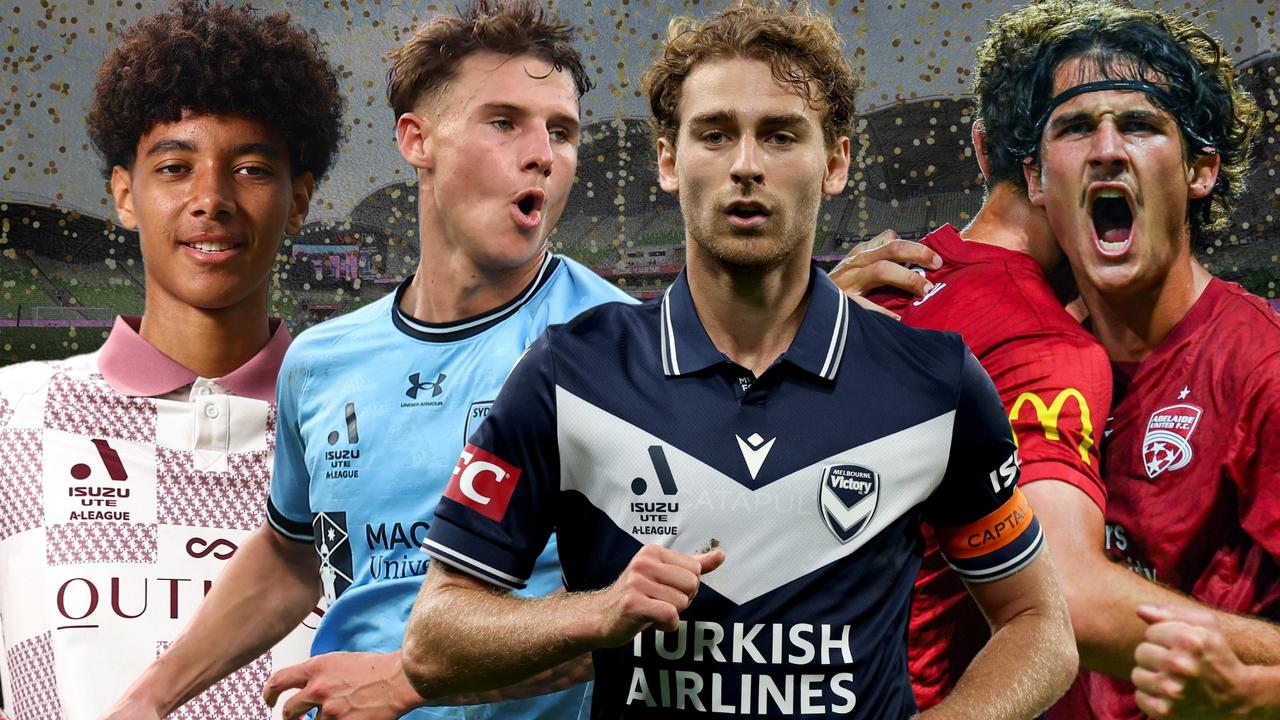Geelong, South Melbourne and Casey-Dandenong line up, but where in Australia will the A-League’s next club come from?
THE FFA wants to “fish where the fish are” when it comes to A-League expansion, but football writers David Davutovic and Matt Windley found there are plenty of fish in this sea.
A-League
Don't miss out on the headlines from A-League. Followed categories will be added to My News.
A-LEAGUE expansion is the hottest topic among soccer fans around the country, with Football Federation Australia set to add two new teams in the coming seasons.
In Victoria we’re no different, with three potential teams coming out of the woodwork.
This week the Herald Sun revealed a bid by former National Soccer League powerhouse South Melbourne to become Victoria’s third A-League club, while Geelong and Melbourne’s southeast — namely the Casey-Dandenong region — have also thrown their hats in to the ring.
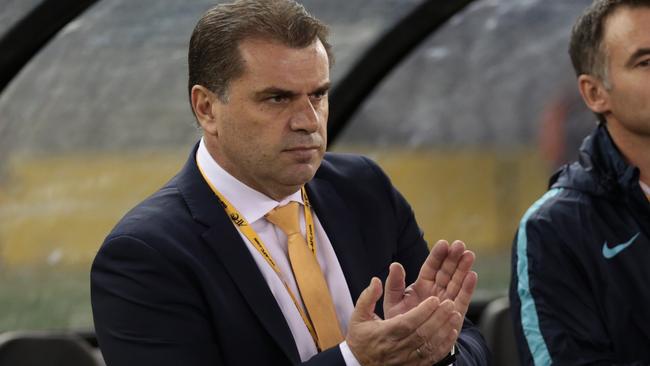
Nationwide, Tasmania has also submitted a bid, there is interest in yet another Sydney team while bidders from Brisbane, Adelaide and Perth are emerging in attempts to become their city’s second team.
With David Gallop’s oft-repeated quote of the FFA seeking to “fish where the fish are” in regards to expansion, it seems not a matter of if, rather when, Melbourne Victory and Melbourne City will have another Victorian rival in town.
But what — or where — should that team be?
Matt Windley and David Davutovic dissect the lay of the land.
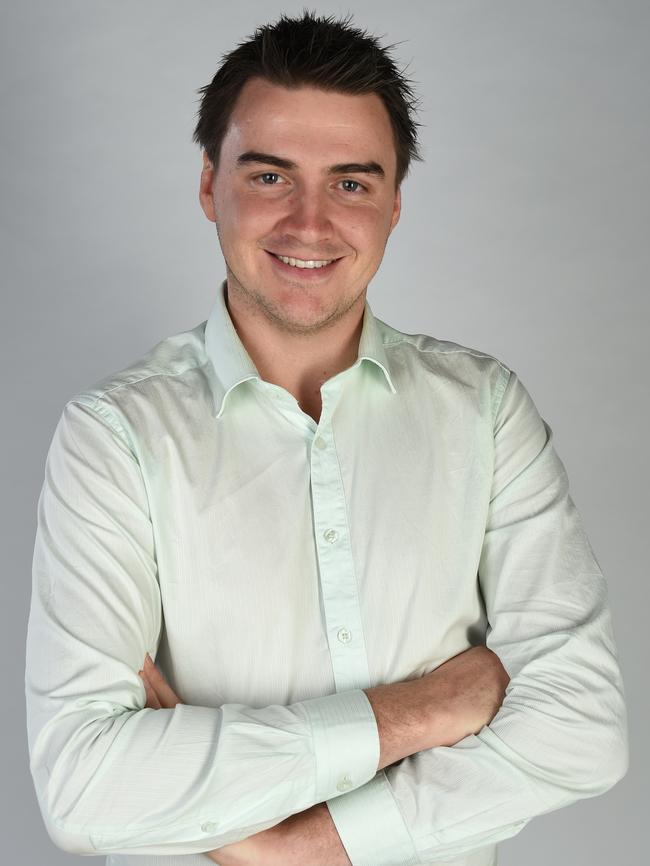
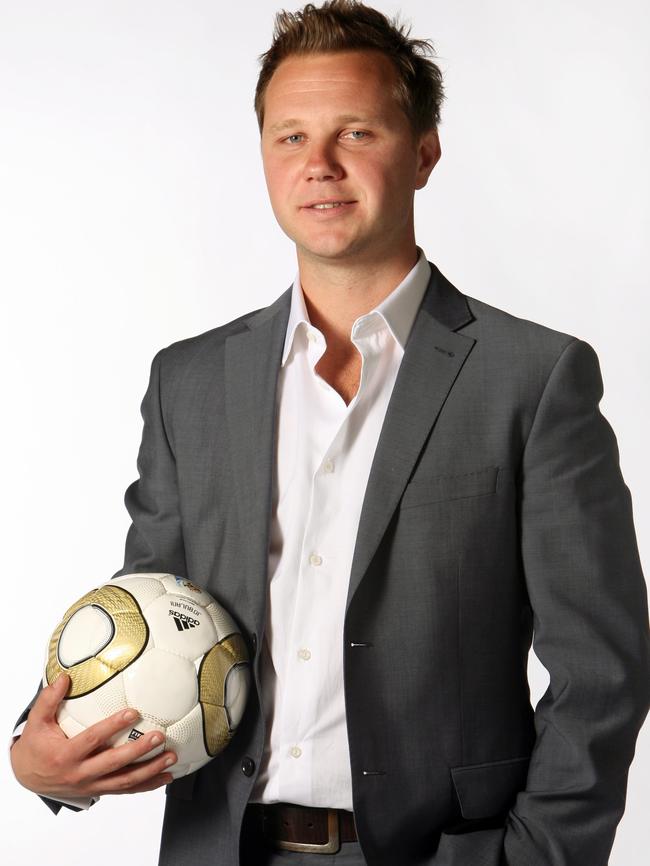
WHO HAS PUT THEIR HAND UP?
■ Victoria:
> South Melbourne:South’s want A-League gig next season
> Geelong:Consortium meets with FFA over Geelong A-League bid
> Casey-Dandenong:Power clubs unite to push for A-League licence
■ Queensland:
> Brisbane Strikers
■ New South Wales:
> South-West Sydney
> Southern Sydney
> Wollongong
■ South Australia:
> West Adelaide
■ Western Australia:
> Perth II
■ Tasmania
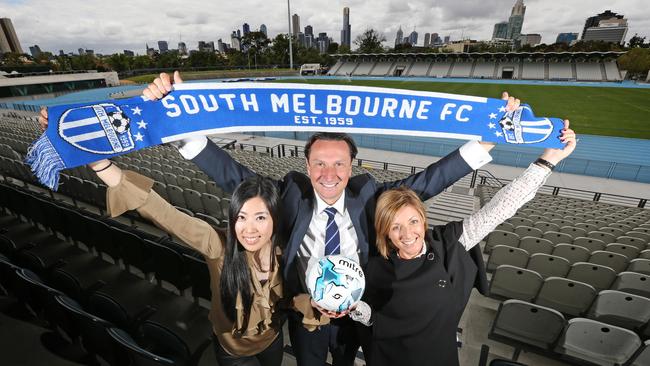
THE STORY SO FAR
Matt Windley: No.1 question asked of me this week is do we even need a third Melbourne team? Unequivocally the answer is yes. There were 66,194 players registered at Victorian clubs in 2016 — not to mention their families and other non-playing soccer supporters. Yet Melbourne Victory and Melbourne City’s combined membership is 38,000. A third local team has a huge market to tap in to.
David Davutovic: Agree. There’s so much nationwide interest that the A-League could be expanded by two teams and an 8-10 team second division could happen within two years. We’re all waiting on FFA to release their expansion blueprint. If they’re waiting to finalise TV negotiations, that’s shortsighted. The TV networks should not dictate where and when expansion occurs.
MW: A third club can help Victory and City. Six more lucrative Victorian derbies and more mainstream media coverage which can be exploited by the incumbents as much as the newcomer.
DD: It’s a matter of when, not if. Melbourne City has much more growth, but this will force them to raise the bar and as long as there’s a clear point of difference they’ll be fine.
THE CANDIDATES
Check out the article in @theheraldsun as we look towards the @ALeague expansion! https://t.co/nieAQwme3D
— South Melbourne FC (@smfc) November 14, 2016
South Melbourne
MW: The interest levels when news broke that South is making a bid were astronomical. They will be a massive talking point if they get in — which is something the A-League desperately needs. Some games in this competition which are non-events, but a game against South will absolutely not be.
DD: That’s why South and some of these other bids have emerged. They believe they can outdo the current clubs. Competition is crucial, it drove Sydney FC and Victory to new levels.
MW: They’ve got a stadium, an established fanbase and history. Will be an interesting story to follow.

Geelong
DD: I despise watching soccer at oval venues, but Kardinia Park is decent because it’s narrow. A rectangular stadium is still the key long-term. Short-term priorities are funding and appealing to the fans.
MW: I want to be sure there’s a groundswell of community support behind this push. It has the right ingredients, but if the crowds don’t flock in then it could be a white elephant.
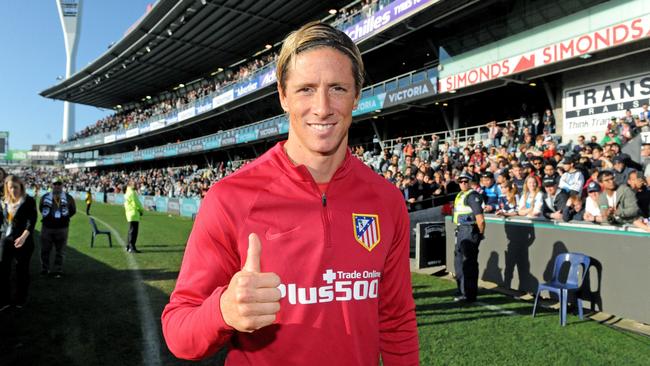
Southeast Melbourne (Casey-Dandenong)
MW: Done right, the Casey-Dandenong region has huge potential. The local clubs can provide the support with attracting members and supporters to the A-League club, the A-League club can provide a pathway to the top exclusively for local players with its underage and women’s teams.
DD: The AFL erred in selling Waverley Park — there is no national sports footprint in the southeast and the A-League can create that. This is the bid the AFL would be wary of because it has the potential to be a powerhouse.
MW: The lack of a stadium is clearly a sticking point. But both the Casey and Dandenong councils have expressed interest and there is land available, so it’s not inconceivable that one could be built in the next decade.
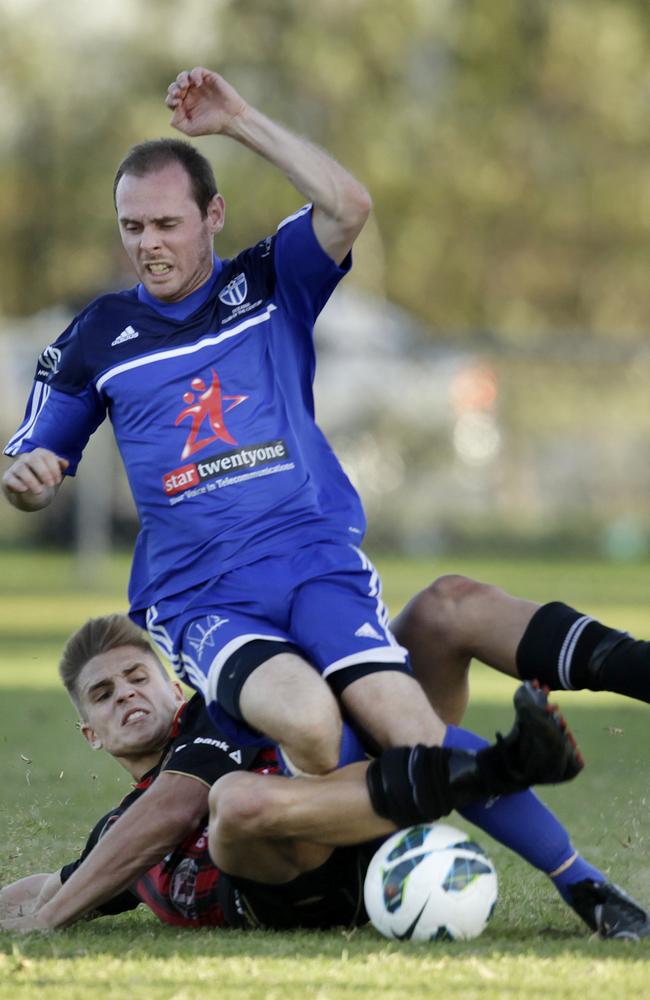
THE PROCESS
MW: When will expansion happen?
DD: Criteria will be released “early next year” according to FFA. I don’t understand why they have to wait that long. Fans, clubs and consortium are chomping at the bit, Tasmania want to join next season. It’s set up, ready to go with serious backing and it won’t cost FFA a dollar.
MW: It’s obviously a delicate situation. Expansion clubs have failed before and FFA can’t afford for them to fail again.
DD: They expanded for the wrong reasons, government funding for 2022 World Cup stadiums was a big motivator in setting up Gold Coast and North Queensland. FFA needs to declare their expansion strategy and open up the bidding. The most compelling ones will stand out.
THE CANDIDATES FROM AROUND AUSTRALIA
■ TASMANIA
Population: 515,000
Stadium: North Hobart Oval (18,000)
Bankrolled by two former Melbourne Victory shareholders, the Tasmania bid has government support, a ground and has already met with FFA.
■ BRISBANE STRIKERS
Membership: 1000
Stadium: Perry Park (5000 – needs to be redeveloped)
Former A-League coach Miron Bleiberg associated with a serious bid by the former National Soccer League champion.
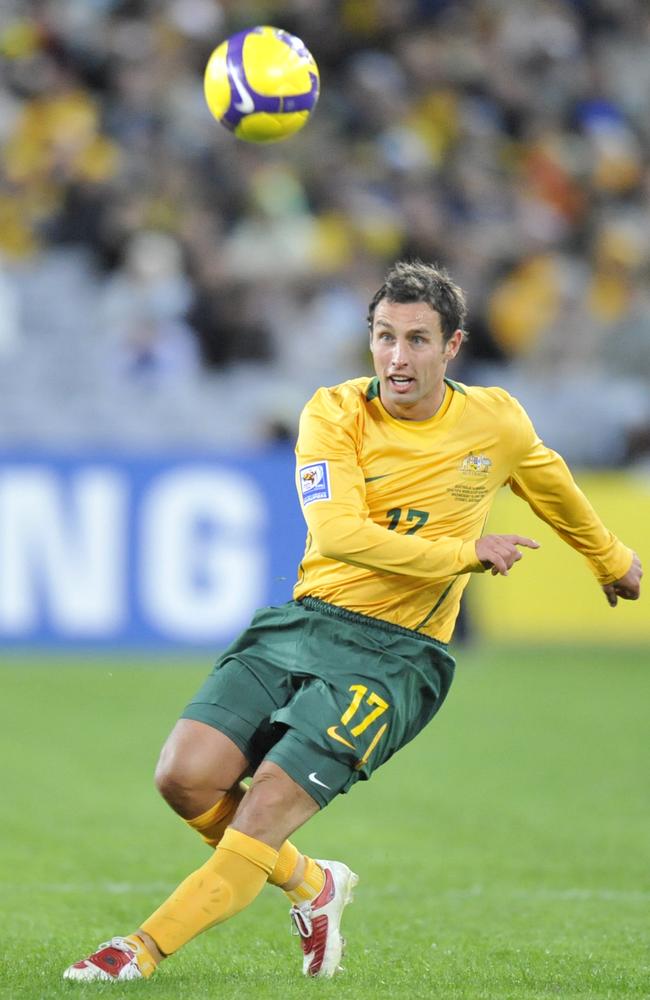
■ SOUTH-WEST SYDNEY (CAMPBELLTOWN-LIVERPOOL)
Population: 400,000
Stadium: Campbelltown Sports Ground (20,000)
The southwest corridor is NSW’s fastest growing region with a love of soccer, an ideal stadium and 50km away from Wanderland (Parramatta Stadium).
■ SOUTHERN SYDNEY
Population: 360,000
Stadium: Shark Park (22,000)
Lined up to replace Wellington before FFA backflipped. The Sutherland Shire has Australia’s most registered players and a perfect stadium.
■ WOLLONGONG
Population: 290,000
Stadium: WIN Stadium (23,000)
Has the history, has the fervent supporter base and every time an A-League or FFA Cup game is played there the crowds turn out in droves.
■WEST ADELAIDE
Membership: 800
Stadium: Coopers Stadium (15,000)
The only serious hand up thus far to become Adelaide’s second team and they’ve sounded out Robbie Fowler to become coach.
■ PERTH II
Population: 2,000,000
Stadium: nib Stadium (20,500)
Fremantle would create a geographic divide and the new Perth Stadium (to be completed in 2018) will be ideal for derbies, seating 65,000.
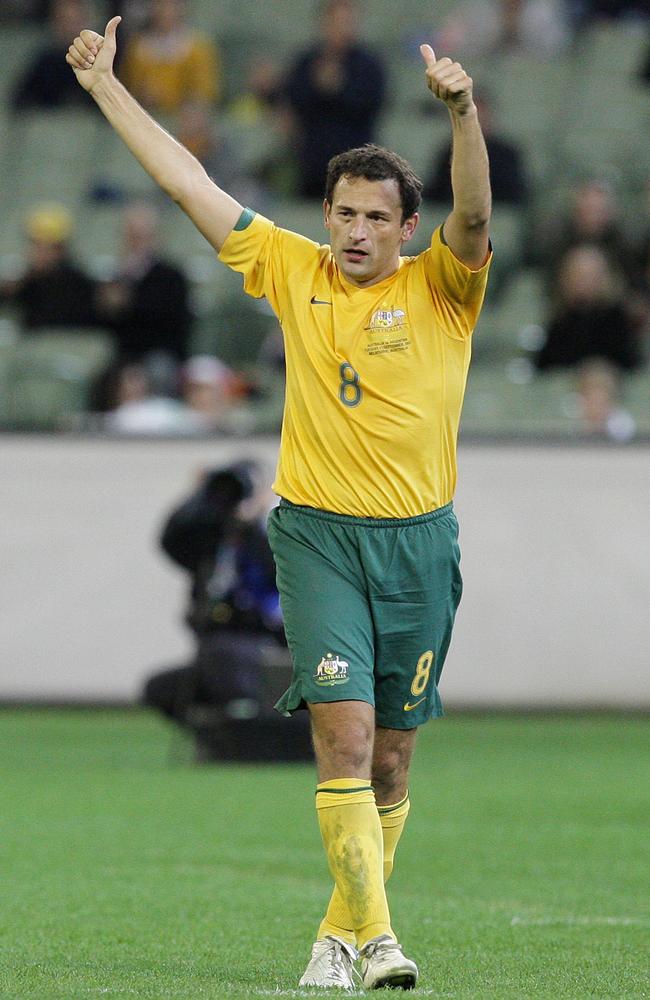
Originally published as Geelong, South Melbourne and Casey-Dandenong line up, but where in Australia will the A-League’s next club come from?


